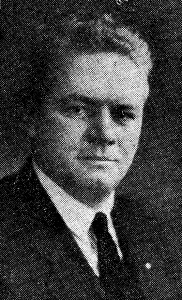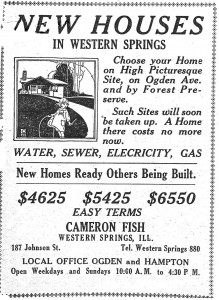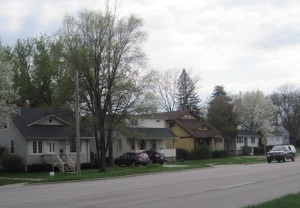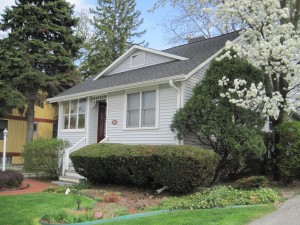You’re familiar with Old Town, Field Park, Forest Hills, Ridge Acres, Springdale, etc. But, does the name “Fishville” ring any bells?

Fish – circa 2013
Western Springs is a town of neighborhoods. Some, like Old Town North, date back to the very beginnings of the Village, while others, like Commonwealth and Timber Trails, are relative newcomers. But, there’s one small section of the village that thousands of motorists see each day, yet know very little about.
In 1922, Cameron Fish and his wife, Rose, moved to Western Springs. Mr. Fish was active in the Congregational Church, the Elks Lodge, and Democratic politics. A graduate of Northwestern University’s law school, he had law offices in both downtown Chicago and LaGrange.
While he and his family resided in the 4100 block of Johnson Avenue, Mr. Fish acquired vacant land on Hampton and Rose Avenues, adjoining Ogden Avenue. And, in the mid-1920s the lawyer-turned-developer began advertising “charming bungalows” for as little as $4,625. This was at a time when most homes in the village were selling for at least $7,000.

Cameron Fish – circa 1930

Cameron Fish Ad – 1925
In today’s vernacular, the 35 new houses were “starter homes”. In fact, the first five were built on cedar posts without a basement. They also came without indoor plumbing. Most of the homes sat on 50-foot lots, had “four large rooms”, and some had garages. For just $350 down and $50 a month, a buyer could live in the “prettiest location in Western Springs”, adjacent to the Forest Preserve.
Responding to either Village demands or customer needs, Fish retrofitted the first five homes with basements and plumbing. In a newspaper interview, he mentioned that three of his homes housed families with as many as six children. He also proudly stated that he had “… provided the poor people with a place to live”. Almost immediately, that corner of the Village became unofficially known as “Fishville”.
In 1927, Fish announced he would be building seven more homes on Rose and Garden Avenues. But, today only a few of Fish’s original homes remain, most of which face Ogden Avenue.

Fish homes located along Ogden Avenue – 2013

A remaining Fish home – 2013
By all accounts, the homes were well constructed. And, as shown below, the surviving homes continue to be well maintained by their owners. In fact, most have been modernized and enlarged in ways that Cameron Fish could have never imagined.
In 1933, the Great Depression stalled home sales nationwide. As a result, Cameron Fish re-focused his energies on the practice of law. Tragically, in 1943 he was critically injured in an automobile accident at the corner of York Road & 22nd Street. While he subsequently died of pneumonia, 70 years later, some of his original homes are still standing.
